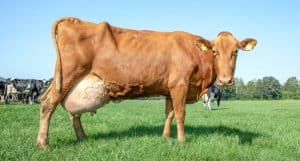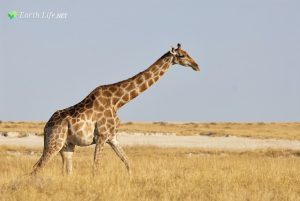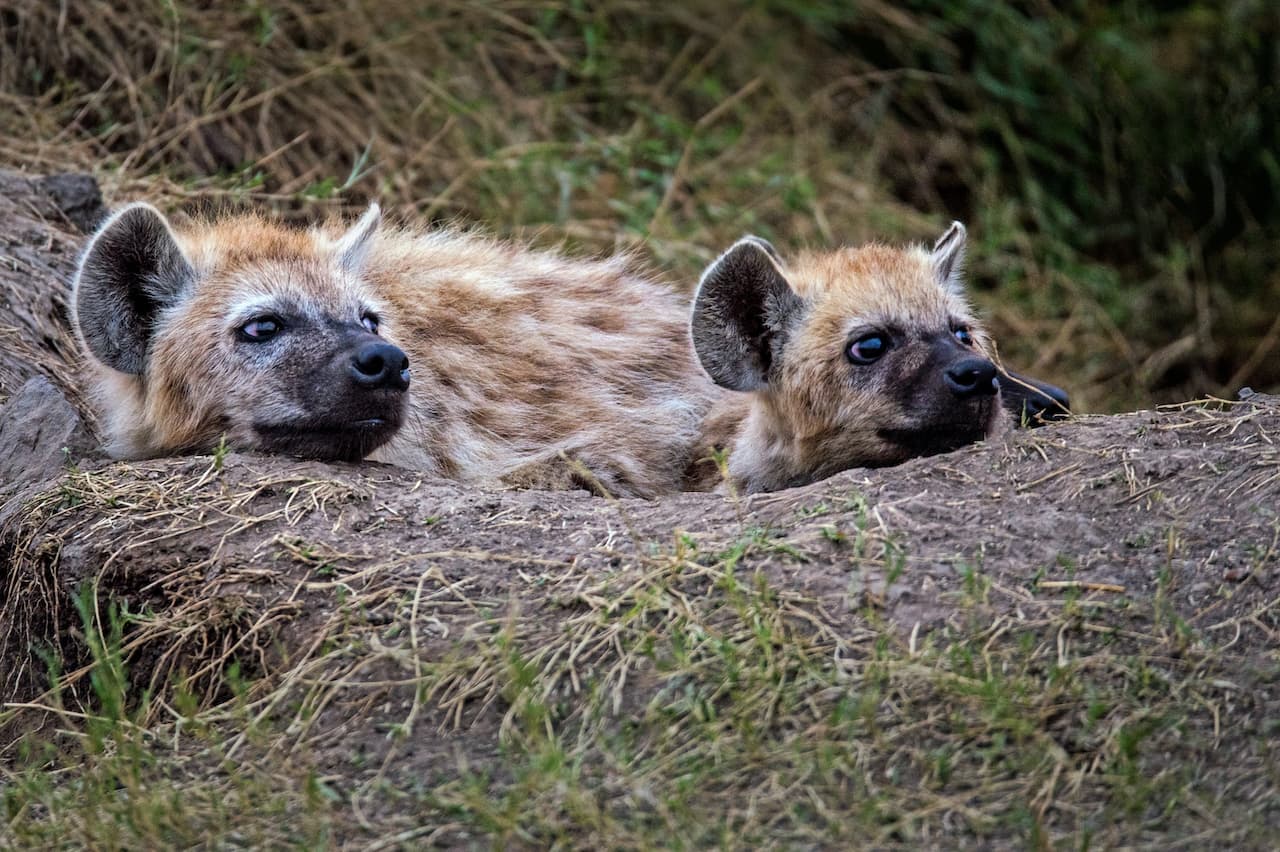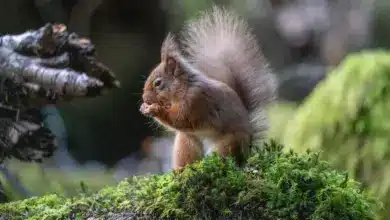Mammal Characteristics 101
Mammal Characteristics 101: What Is A Mammal?
Mammals are animals.
Yes – but so are Insects, Reptiles, Spiders, Sponges and Slugs. We need to do better than that!
Mammals have a back-bone. Yes – but so do Fishes and Frogs… and they are not mammals.
Mammals are warm-blooded. Yes – but so are birds… and birds are not mammals either.
So, how on earth do we define a mammal?
Obviously, what we need in order to define a mammal are some characteristics. Some traits that are possessed by all mammals and are unique to mammals.
I.e., they do not also occur in fishes and slugs, etc.
Fortunately, scientists have already worked it all out for us.
Mammal Characteristics
So here are six solid traits that define an animal as a mammal:
Characteristic #1
The first characteristic that guarantees that an animal is a mammal is that it (if it is female) can produce milk to feed its young (see mammalian milk). This milk is produced by modified sweat glands called ‘mammary’ glands. It is from these glands that the whole group takes its name: ‘mammals’.
The second test is the possession of hair. Something humans often have problems with, but which they should respect more. No other animal has hair in the same form as mammals and all mammals have some hair – at least at the beginning of their lives. Baby whales and dolphins are born with a moustache!
Characteristic #3
The lower jaw in mammals is a single bone on either side. In all other vertebrates there are more than one bone on each side of the jaw.

Characteristic #4
The mammal middle ear (and only the mammal middle ear) contains 3 bones. The Stapes or (Stirrup), Incus or (Anvil) and the Malleus or (Hammer). Once these bones were part of the lower jaw, but during the early evolution of mammals they changed jobs and became a part of our hearing apparatus instead.
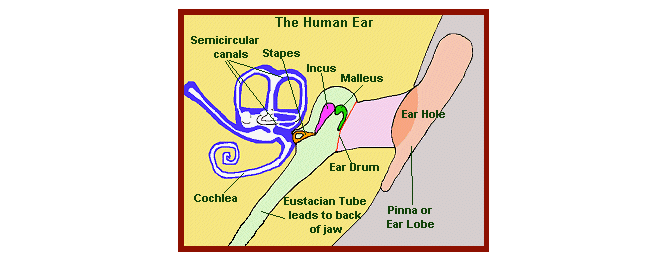
Characteristic #5
In mammals, the main artery leaving the heart curves to the left becoming the aortic arch. In birds, it curves to the right and in all other vertebrates there are more than one main artery leaving the heart.

Characteristic #6
Finally, mammals have a diaphragm. A sheet of muscle and tendon that separates the body cavity into two sections. The heart and lungs are above the diaphragm. While the liver, kidneys, stomach, intestines, etc. are below it. No other animal has a diaphragm.
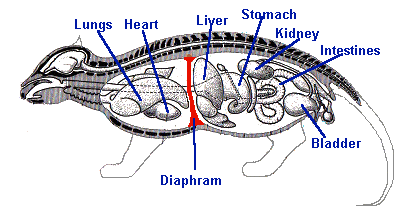
How Many Species Of Mammals Are There?
According to an article in Journal of Mammalogy February 2018, there are 6,399 species as of the date of publication. Genera = 1314 and Families 167 – (14 new families recognized since 2004)
I say ‘about’ because it is hard to get a list of species that all the experts agree on… probably even harder than answering the question of what a mammal is!
So, until you become an expert taxonomist and can solve the problems of what are or are not species – 6,399 will do for 2020 AD.
But, of course, more will be discovered and some will inevitably go extinct.
Approximately 96 species of mammals have gone extinct recently (meaning in the last 500 years). Sadly, while extinction is a natural process, humankind is in danger of becoming the greatest cause of extinction in other life forms on this planet. But we can change this by learning to care for and share this beautiful planet with other creatures.
The Class Mammalia
Mammals (or Class Mammalia) are a class in the Phylum Chordata and the Subphylum Vertebrata.
- Kingdom >>> Animalia
- Phylum >>> Chordata
- Subphylum >>> Vertebrata
- Class >>> Mammalia
There are 3 Subclasses within the class Mammalia:
- Prototheria or Monotremes (3 genera and 5 species)
- Metatheria or Marsupials (91 genera and 379 species)
- Eutheria or placental mammals (1220 genera 6111 species)
Within each Subclass are Orders, Families, Genera and numerous Species (see Introduction To Taxonomy)
Other Traits And Criteria
Other characteristics, or traits, which are sure indicators that an animal is a mammal (but which may not be present in all mammals) include:
- The possession of a placenta in the females, which allows the mother’s system to nourish the growing young without being attacked by the mother’s immune system. This applies to all the Eutheria, which is why they are called placental mammals. Cows, horses, dogs, cats and people are all placental mammals.
- Mammals have only two sets of teeth. Reptiles and fish have many sets and can replace lost teeth with new ones all their lives.
- Mammals are heterodontic, meaning that their teeth are different shapes – except those with no teeth at all. We have some or all of: incisors, canines, molars and premolars. Reptiles and fish have teeth that are all basically the same, though they can vary in size throughout the mouth. See image under Characteristic #3.
- The Buccal Cavity (the mouth) has a false palate as a roof, meaning that the nostrils do not lead directly into the mouth. Effectively this means that if your mouth is full of food, you can still breathe. But a reptile has to breathe around its food.
- The body is maintained at a constant temperature, meaning mammals are endothermic. They generate heat within their bodies metabolically and also have special cooling mechanisms.
Not all mammals choose the same temperature and some are not very good at it. Bats, for instance, tend to cool down considerably when at rest. This is partly because of the large surface area for heat loss supplied by their wings.
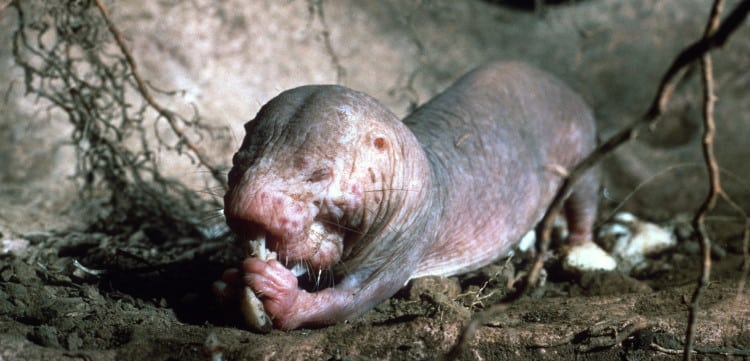
Finally, there are the Naked Mole Rats, Heterocephalus glaber which have lost this ability. Probably because they do not need it anymore. Birds are also endothermic. For more information on this see warm blooded mammals.
Final Thoughts
So now you have a better idea of how to properly answer the question “what is a mammal?”.
Ultimately though, mammals are part of the beauty and diversity of life that makes this world so good to live in. Unfortunately, many people in positions of power fail to appreciate this beauty and the precious fragility of life and many mammal species are currently in danger of disappearing forever.
So far 86 species and 24 subspecies, a total of 110 distinct taxa of mammals, have already become extinct since mankind started keeping records. Apart from these, 241 taxa of mammal are currently on the IUCN critically endangered list. Another 436 taxa are listed as Endangered and a further 776 are classed as vulnerable.
In total this means 1,453 taxa or over 25% of all living mammals are listed in the IUCN Red Data book.
Learn More About Mammals:
Use the links below to navigate around the mammals section of our site:
Mammal Orders & General Information:
-
Mammal Orders & Families
-
Chiroptera (Bats)
-
Facts About Mammals
-
What Do Mammals Eat?
-
Evolution Of Mammals

